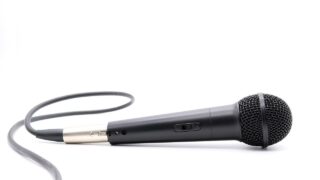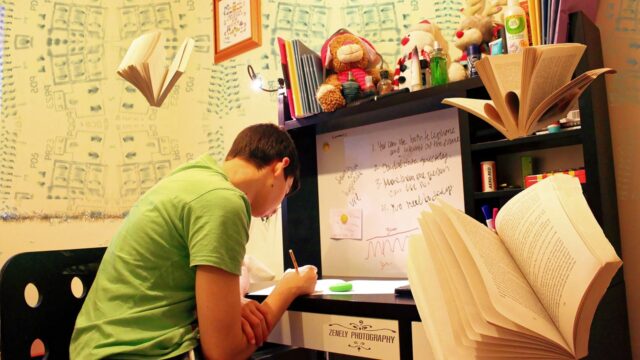ライフハックとしてではなく、英語学習にも極めて有用なのが、著名人が10分程度のプレゼンを行うTEDです。
TED Talksとは、あらゆる分野のエキスパートたちによるプレゼンテーションを無料で視聴できる動画配信サービスのことです。10年ほど前にサービスが開始されてから、政治、心理学、経済、日常生活などの幅広いコンテンツが視聴できることから人気を集めています。
RareJob English Lab
TEDは4000を超える膨大な数の動画があります。しかし慣れないうちは、動画の探し方や視聴のコツが分かりませんよね。この記事では、数多くのTEDを見てきた管理人(塩@saltandshio)が、心を揺さぶられたトークをあらすじと一緒にご紹介します。
ビジネス英会話を効率よく身につけたい方におすすめスクール
シェーン英会話
シェーンは1977年の創業以来、ネイティブ講師が英語を英語で教える「直接教授法」を採用しています。首都圏におけるスクール拠点数は、ネイティブ講師の英会話スクールでNo.1。駅から近いスクールが多いので通いやすく時間を有効に使えます。
スピークバディ パーソナルコーチング
1日1時間の短期集中トレーニングで、あなたの英語力向上をコーチが全力でサポートします。あなたの英語の世界が、劇的に変わります。
ダオ・グエン:コンテンツを流行らせる要素とは?
注目を集めるコンテンツを作るには、どんな秘密があるのでしょうか?Buzzfeedの発行人ダオ・グエンのチームが、コンテンツを用いてどのように人々がつながったり、文化を生み出したりするのか理解するためのシステムをどのように開発したか紹介します(約10分半)。
[PR]無料体験レッスン実施中!全国208校、創業40年の老舗英会話スクール【シェーン英会話】どうすれば人気の動画は生まれるのか
YouTubeやInstagramなどを利用し、様々な情報発信して人気を集める人が数多くいます。これから、そんなSNS産業にトライしてみたいと考えている人も多くいるでしょう。そんな人たちの共通の疑問が『どうすれば人気を集められるか』ではないでしょうか。
ダオ・グエンのチームは、ある日上司の誕生日にヤギの赤ちゃんを連れてくるというイタズラを仕掛けました。この様子は生配信されて、じつに9万人の視聴者が彼らのイタズラを楽しみました。ただ、この結果に驚いたのは企画をした当の本人たちです。なぜならこのイタズラは、内輪ネタとして10程度で終わる予定で、視聴者もせいぜい数百人程度だろうと思われていたからです。
私たちチームはこの動画についてや、人気になった理由について、何度も話し合いました。
Now, our team had a lot of discussion about this video and why it was so successful.
この動画はなぜ9万人もの人が視聴したのでしょうか。じつはすぐにオフィスに来ると思っていた上司がなかなか現れず、飲み物を取りに行ったり、会議に呼び出されたりして、ヤギと遭遇したのは予定の30分も後だったのです。このすんなり物事が進まない待ち時間が視聴者をワクワクさせて、それを多くの人と共有したのが動画が盛り上がった理由でした。
[PR]まずは無料カウンセリング”続けるため”の オンライン英語コーチ「スピークバディ パーソナルコーチング」生配信が盛り上がるのは「共通の期待」に参加するワクワク感
ヤギのイタズラ動画が盛り上がったのは、一瞬とはいえ、視聴者はある集団に参加していたことが嬉しかったのではないかという仮設を立てたダオ・グエンのチームは、今度はそれを検証しようと新たな動画を配信します。食べ物動画はとても人気との情報を携え、防護服に身を包んだ2名を登場させてスイカが爆発するまで輪ゴムを巻いてもらったのです。
視聴者数は80万人で、690本目の輪ゴムが巻かれた瞬間にスイカが爆発し、Facebookのライブ動画で過去最大の視聴者数を記録しました。
Eight hundred thousand people watched the 690th rubber band explode the watermelon, marking it as the biggest Facebook Live event to date.
そんな彼らには、 「コンテンツを流行らせる方法は?」という質問が多く寄せられるそうです。
質問そのものが見当外れです。 内容が重要なのではなく、コンテンツを読んだり観たりしている人が、何を考えているかに注目します。
The question itself is misplaced; it’s not about the something. It’s about what the people doing the something, reading or watching — what are they thinking?
多くの企業では、顧客を獲得するためにテーマや形式、またはそれらに関するデータを重要視しますが、そればかりに注目していると重要なことが見えてこないとダオ・グエンは言います。
[PR]しちだの魔法ペンなら35日でバイリンガルに!楽天4部門1位の英会話!<七田式>コンテンツがユーザーの生活にどのような役割を果たすのか
そこで、発信するコンテンツが、ユーザーの生活にどのような役割を果たすのかを考えてみましょうと、ダオ・グエンは提案します。そして、自分たちが作成した、ユーザーが求めるコンテンツを分類分けした『文化地図』を紹介します。
これは、コンテンツがどのように読者や視聴者に影響を与えるのか、それを中心に考えようというコンセプトで視聴者が求めるジャンルを分類分けにしたものです。これらは大きく5つのジャンルに分けられます。
- 「ユーモア」系:笑わせてくれるもの
- 「自己表現」系:これが私、というものを紹介するもの
- 「他人とつながれる」系:誰かとの絆を正確に表現できるもの
- 「何かの手助けになる」系:自分や他人について学んだりするもの
- 「何かの感情を生む」系:好奇心や悲しみが生まれたりするもの
これらに共通するのは、「あなたと私」です。メディアを通じて、2人(視聴者と発信者)より深い関係を確立していければ、 コンテンツは盛り上がるだけではなく、本当の役割を果たせたといえるとダオ・グエンは伝えます。
[PR]知って得する、知らないと損をする!すぐに役立つ相手に合った「伝え方」のコツ!ユーザーの立場から考えよう
コンテンツのなかには、発表した後にそれが果たした役割を発見することもあります。当初狙っていたターゲットでは盛り上がらず、別のターゲット層で思いがけない人気を需要を得るなどがそれです。ただ、当初の目論見がはずれたとしても、そもそものコンテンツは誰かが心に抱える欲求不満を解消するために作成されたということには変わりありません。
たいていのメディア企業は、メディアを「自分中心」に考えています。私のファンは何人くらい?私のフォロワーはどれくらい増えた?私のビデオの視聴数はどれくらい?私のデータウェアハウスには、どれくらいユニークなIDがある?
これでは、データの本質である「受け手」を見逃します。
Most media companies think of media as “mine.” How many fans do I have? How many followers have I gained? How many views have I gotten? How many unique IDs do I have in my data warehouse?
But that misses the true value of data, which is that it’s yours.
データの中から、受け手にとって重要なコンテンツを掘り出して、自社コンテンツが受け手の実生活にどう役に立つかを深く理解できれば、受け手に合ったコンテンツを作れるとダオ・グエンは言います。そうして作られたコンテンツが、最終的には受け手の心に響くのです。
[PR]検定試験合格者累計140万人!スマホ対応☆国家資格ほか資格取得ならSMART合格対策講座まとめ:コンテンツを受け手の心に届けよう
ダオ・グエンのチームが作成した『文化地図』は、たんに視聴者が求めるジャンルをカテゴライズしたものではありません。
- Who are you?:受け手はどんな人か?
- How did you get there?:どうやってそこにたどり着いた?
- Where are you going?:どこに行くのか?
- What do you care about?:何を気にしているのか?
- What can you teach us?:何を教えてくれるのか?
これらのテーマを明確化してくれるのも『文化地図』なのです。もしあなたの作ったコンテンツの人気がイマイチなのであれば、5つのうちの何かが欠けているのかもしれません。それらを見直せば、きっと受け手の心にも届くことでしょう。
英語全文
Last year, some BuzzFeed employees were scheming to prank their boss, Ze Frank, on his birthday. They decided to put a family of baby goats in his office.
<全文を読む>▼クリック▼
Now, our team had a lot of discussion about this video and why it was so successful. It wasn’t the biggest live video that we had done to date. The biggest one that we had done involved a fountain of cheese. But it performed so much better than we had expected. What was it about the goats in the office that we didn’t anticipate? Now, a reasonable person could have any number of hypotheses. Maybe people love baby animals. Maybe people love office pranks. Maybe people love stories about their bosses or birthday surprises. But our team wasn’t really thinking about what the video was about. We were thinking about what the people watching the video were thinking and feeling. We read some of the 82,000 comments that were made during the video, and we hypothesized that they were excited because they were participating in the shared anticipation of something that was about to happen. They were part of a community, just for an instant, and it made them happy.
So we decided that we needed to test this hypothesis. What could we do to test this very same thing? The following week, armed with the additional knowledge that food videos are very popular, we dressed two people in hazmat suits and wrapped rubber bands around a watermelon until it exploded.
Eight hundred thousand people watched the 690th rubber band explode the watermelon, marking it as the biggest Facebook Live event to date.
The question I get most frequently is: How do you make something go viral? The question itself is misplaced; it’s not about the something. It’s about what the people doing the something, reading or watching — what are they thinking? Now, most media companies, when they think about metadata, they think about subjects or formats. It’s about goats, it’s about office pranks, it’s about food, it’s a list or a video or a quiz, it’s 2,000 words long, it’s 15 minutes long, it has 23 embedded tweets or 15 images. Now, that kind of metadata is mildly interesting, but it doesn’t actually get at what really matters. What if, instead of tagging what articles or videos are about, what if we asked: How is it helping our users do a real job in their lives?
Last year, we started a project to formally categorize our content in this way. We called it, “cultural cartography.” It formalized an informal practice that we’ve had for a really long time: don’t just think about the subject matter; think also about, and in fact, primarily about, the job that your content is doing for the reader or the viewer.
Let me show you the map that we have today. Each bubble is a specific job, and each group of bubbles in a specific color are related jobs.
First up: humor. “Makes me laugh.” There are so many ways to make somebody laugh. You can be laughing at someone, you could laugh at specific internet humor, you could be laughing at some good, clean, inoffensive dad jokes.
“This is me.” Identity. People are increasingly using media to explain, “This is who I am. This is my upbringing, this is my culture, this is my fandom, this is my guilty pleasure, and this is how I laugh about myself.” “Helps me connect with another person.” This is one of the greatest gifts of the internet. It’s amazing when you find a piece of media that precisely describes your bond with someone.
This is the group of jobs that helps me do something — helps me settle an argument, helps me learn something about myself or another person, or helps me explain my story.
This is the group of jobs that makes me feel something — makes me curious or sad or restores my faith in humanity.
Many media companies and creators do put themselves in their audiences’ shoes. But in the age of social media, we can go much farther. People are connected to each other on Facebook, on Twitter, and they’re increasingly using media to have a conversation and to talk to each other. If we can be a part of establishing a deeper connection between two people, then we will have done a real job for these people.
Let me give you some examples of how this plays out. This is one of my favorite lists: “32 Memes You Should Send Your Sister Immediately” — immediately. For example, “When you’re going through your sister’s stuff, and you hear her coming up the stairs.” Absolutely, I’ve done that. “Watching your sister get in trouble for something that you did and blamed on her.” Yes, I’ve done that as well. This list got three million views. Why is that? Because it did, very well, several jobs: “This is us.” “Connect with family.” “Makes me laugh.” Here are some of the thousands and thousands of comments that sisters sent to each other using this list.
Sometimes we discover what jobs do after the fact. This quiz, “Pick an Outfit and We’ll Guess Your Exact Age and Height,” went very viral: 10 million views. Ten million views. I mean — did we actually determine the exact age and height of 10 million people? That’s incredible. It’s incredible. In fact, we didn’t.
Turns out that this quiz went extremely viral among a group of 55-and-up women — who were surprised and delighted that BuzzFeed determined that they were 28 and 5’9″ . “They put me at 34 years younger and seven inches taller. I dress for comfort and do not give a damn what anyone says. Age is a state of mind.” This quiz was successful not because it was accurate, but because it allowed these ladies to do a very important job — the humblebrag.
Now, we can even apply this framework to recipes and food. A recipe’s normal job is to tell you what to make for dinner or for lunch. And this is how you would normally brainstorm for a recipe: you figure out what ingredients you want to use, what recipe that makes, and then maybe you slap a job on at the end to sell it. But what if we flipped it around and thought about the job first? One brainstorming session involved the job of bonding. So, could we make a recipe that brought people together? This is not a normal brainstorming process at a food publisher. So we know that people like to bake together, and we know that people like to do challenges together, so we decided to come up with a recipe that involved those two things, and we challenged ourselves: Could we get people to say, “Hey, BFF, let’s see if we can do this together”? The resulting video was the “Fudgiest Brownies Ever” video. It was enormously successful in every metric possible — 70 million views. And people said the exact things that we were going after: “Hey, Colette, we need to make these, are you up for a challenge?” “Game on.” It did the job that it set out to do, which was to bring people together over baking and chocolate.
I’m really excited about the potential for this project. When we talk about this framework with our content creators, they instantly get it, no matter what beat they cover, what country they’re in, or what language they speak. So cultural cartography has helped us massively scale our workforce training. When we talk about this project and this framework with advertisers and brands, they also instantly get it, because advertisers, more often than media companies, understand how important it is to understand the job that their products are doing for customers.
But the reason I’m the most excited about this project is because it changes the relationship between media and data. Most media companies think of media as “mine.” How many fans do I have? How many followers have I gained? How many views have I gotten? How many unique IDs do I have in my data warehouse? But that misses the true value of data, which is that it’s yours. If we can capture in data what really matters to you, and if we can understand more the role that our work plays in your actual life, the better content we can create for you, and the better that we can reach you.
Who are you? How did you get there? Where are you going? What do you care about? What can you teach us? That’s cultural cartography.
Thank you.
<閉じる>
\ ほかにも気になるトークが満載! /








